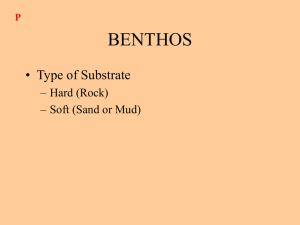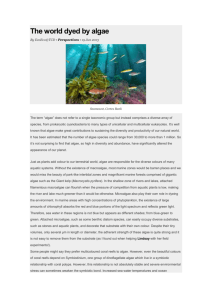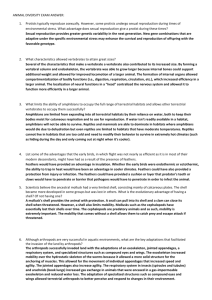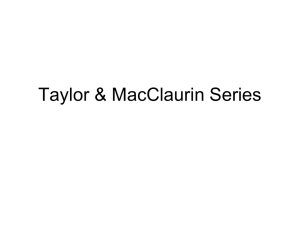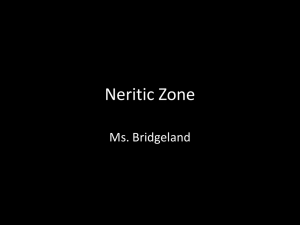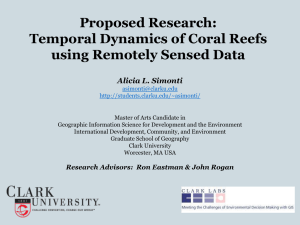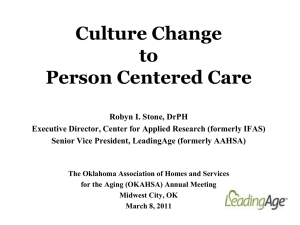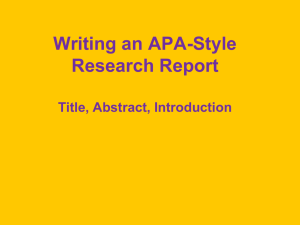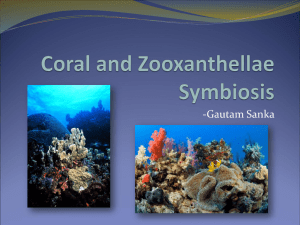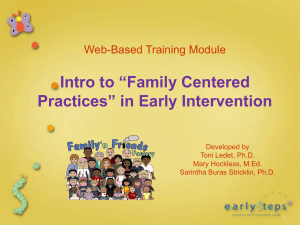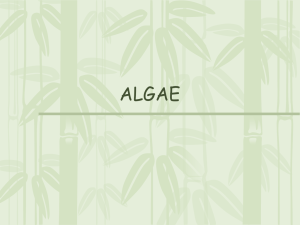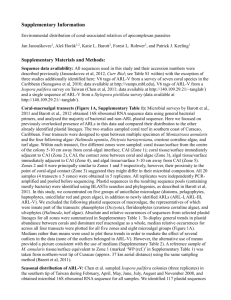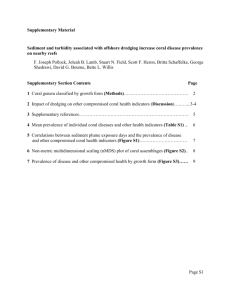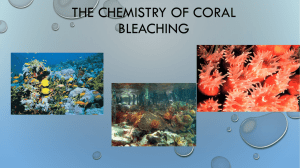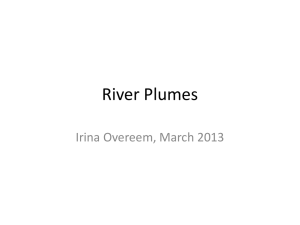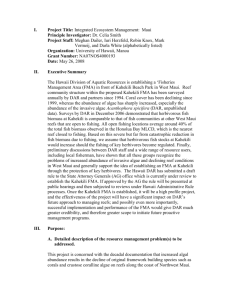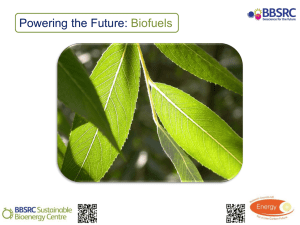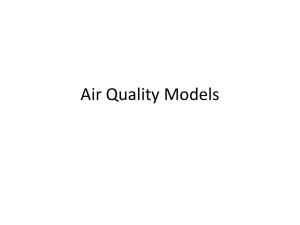Ravit Duncan`s Presentation
advertisement
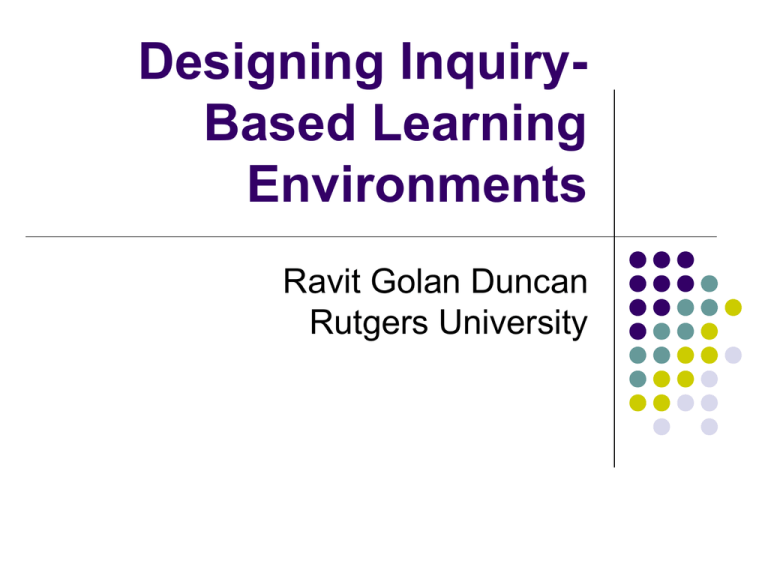
Designing InquiryBased Learning Environments Ravit Golan Duncan Rutgers University Overview The design of COOLClassroom Try it yourself- Model the Hudson River Plume Proficiency in Science- What do we want students to learn and know? Using Data- the Coral Reef Investigation Design Frameworks and the Design Process Building a Design Team Educators Scientists Teachers Domain experts The Team Collaborative team that builds on each other’s expertise. Interface Designers Education Researchers Programmers Graphic artists Learning Scientists Learning Sciences Building theory in education through the design and empirical testing of learning environments that are: 1. 2. 3. 4. Knowledge centered Learner centered Assessment centered Situated within a learning community NRC: How People Learn (Bransford, Brown & Cocking, 1999) Cool Classroom Environment Hudson River Plume http://new.coolclassroo Cool Classroom Environment Knowledge Centered Inquiry-based and organized around questions/problems Includes hands-on and minds-on activities- both on and off line. Investigations conclude with the development of a scientific explanation Mirrors scientific practice (Duschl, 1990; Donovan & Bransford, 2005) Student Centered Initial activities serve to surface students’ prior knowledge Investigation activities help students build understandings of the core concepts There are opportunities to reflect on learning and compare initial ideas to final ideas Surface, build, and revise ideas (Driver et al., 1996; Ford & Forman, 2006) Assessment Centered Formative assessment is critical for learning Reflective journal questions provide an assessable record of student thinking Supports teachers in tailoring instruction to meet students’ needs Make thinking visible (Black & Wiliam, 1998; Bransford, Brown & Cocking, 2000) Community Centered Web-based unit + Scientists + Teacher Students (peer interaction) + http://new.coolclassroom.org/adventures/explore/plume/6 Take a picture of your model White Board Tools Your models A Student Models of the Plume B C Proficiency in Science What do we want students to learn about in science classes? Proficiency in Science A. Content- core concepts and theories B. Practices- the process/method of science C. Epistemology- how scientific knowledge develops Proficiency in Science Know, use, and interpret scientific explanations Generate and evaluate scientific evidence and explanations Understand the nature and development of scientific knowledge Participate productively in scientific practices and discourse NRC 2007 report Taking Science to School Model-Based Inquiry Models are abstractions that highlight certain features that help explain and predict natural phenomena The development, testing and revisions of models is a core practice in science Model-based inquiry is a flavor of inquiry that emphasizes the role of models as tools-tothink-with Developing Models from Data Reef Ecosystems Articles Data Maps Example Model (7-8th grade) Final Model Language of Design Design space - all possible options Design decisions- choice of one option Tradeoffs - benefits and costs associated with each choice You can design however you want to but you must always know what decisions you made and what were the associated tradeoffs Design Frameworks: Backwards Design (UbD- Wiggins & McTighe, 1998) Driven by end goals- what we want students to be able to do (performance oriented) Strength is in the focus on creating greater coherence and alignment between goals, learning experiences, and assessments Design Frameworks: Backwards Design (Wiggins & McTighe, 1998) Determine enduring understandings: Few core ideas as enduring (3-5) Filters- big idea; at heart of domain; requires un-coverage; engaging Evidence: Ongoing assessment (formative) not just at the end; formal and informal; performance oriented Valid, reliable, authentic, feasible Learning experiences: What is the enabling knowledge? Match learning goals to activities Provide scaffolding Coherent and goal oriented for students Design Frameworks: Learning for Use (Edelson, 2001) For each target goal: Motivate: beyond the hook, this is creating a need to know. Create demand/elicit curiosity Construct: provide opportunities for learners to construct the objective understandings (this is where scaffolding comes in) Refine/Apply: provide learners with opportunities to use the knowledge and reflect on it, thus refining it. Design Process Backwards Design: 1. Begin with goals- what are the knowledge and skills you want individuals to develop Learning for Use: 2. Think about motivating problem or project (contextualize) 3. Define the backbone- main sequence of events 4. Develop activities within the backbone Don’t tell the answer, have learners figure it out- they learn goals in context of project 5. Provide opportunity to apply knowledge (culminating task) Design Frameworks: Learning for Use (Edelson, 2001) Learning theories: Constructivism: learners construct knowledge; this takes time and is incremental; kids bring knowledge with them Goal directed: we learn what we need to know, learning is initiated by the learner Knowledge is contextual: retrieved based on contextual cues (indices) Application: For knowledge not to be inert we need to know how to apply it The End ravit.duncan@gse.rutgers.edu Readings… Edelson, D. C. (2001). Learning-for-Use: A Framework for the Design of Technology-Supported Inquiry Activities. Journal of Research in Science Teaching, 38 (3), p355-85 Wiggins, G. & McTighe, J. (1998). Understanding by design. Association for Supervision and Curriculum Development: Alexandria, Virginia. Rivet, A. E., & Krajcik, J. S. (2008). Contextualizing instruction: Leveraging students' prior knowledge and experiences to foster understanding of middle school science. Journal of Research in Science Teaching, 45(1), 79 - 100. Moje, E. B. (2007). Developing Socially Just Subject-Matter Instruction: A Review of the Literature on Disciplinary Literacy Teaching . Review of Research in Education 2007 31: 1-44. Moje, E. B., Collazo, T., Carrillo, R., & Marx, R. W. (2001). “Maestro, what is quality?": Language, literacy, and discourse in project-based science. Journal of Research in Science Teaching, 38(4), 469-496. New Age in Science Education Students’ Explanations Interim Notes: We have many hy potheses. One is that there is too much Algae in the water. This would cloud up the water, making photosynthesis harder, due to lack of sunlight. The coral would then produce more chlorophyl, in an attempt to make the most of the little sunlight that makes it through past the algae. But this attempt would only slow down the process. It also could have been water temperature change . This could upset the balance in the ecosy stem and cuase many coral to die. This could also be linked to the hy pothesis that there could be too many pollutants . fI there are too many pollutants it coulod cuase the water temperature to rise. This couldf urther upset upset the way things are. `May be the thing that cuased all the sea urchin deaths couldbe affecting the corals. May be it was a new kind of fish introduced to the area. It could be allot of things. Final Summary: There were many factors that eff ected the coral. The major f actor starts with the people. The more people there are, the more sewage is dumped into the water surrounding the coral. The more sewage there is, the more the nutrients get off balance. The more the nutrients change, the more the algae grows. The more the algae grows, the more it blocks the sunlight from coming into the water, which keeps the zooxanthellaes f rom perf orming photosy nthesis, which prov di es the coral with its major source of energy. Normally the sea urchins would eat the algae and keep its lev el down, but most of them my ster iously died in 1987.


